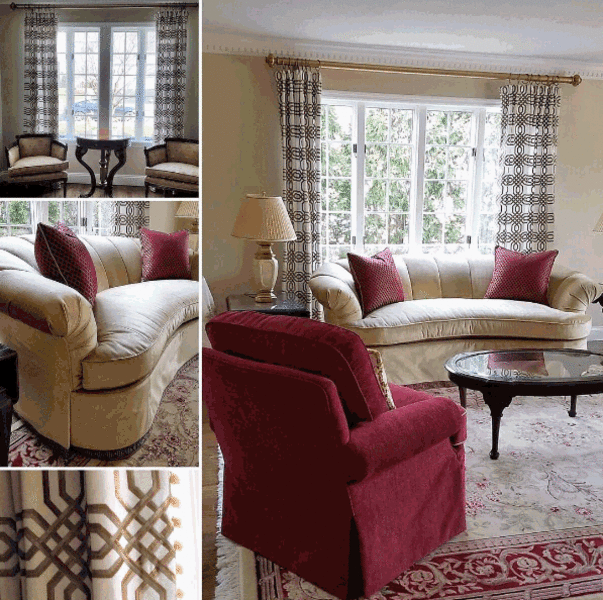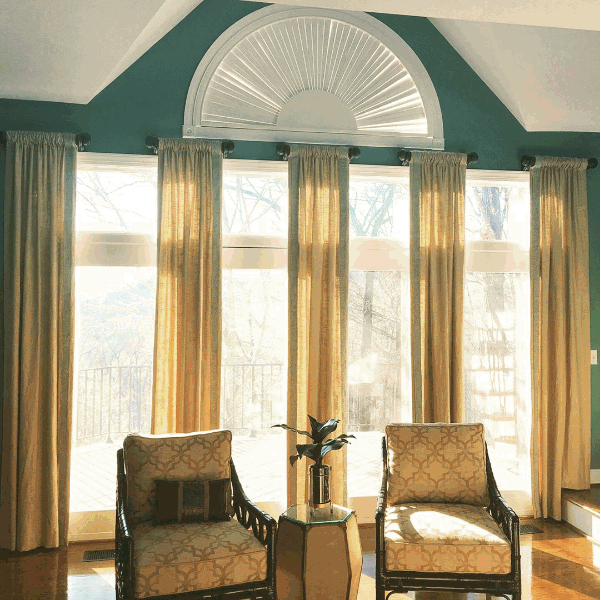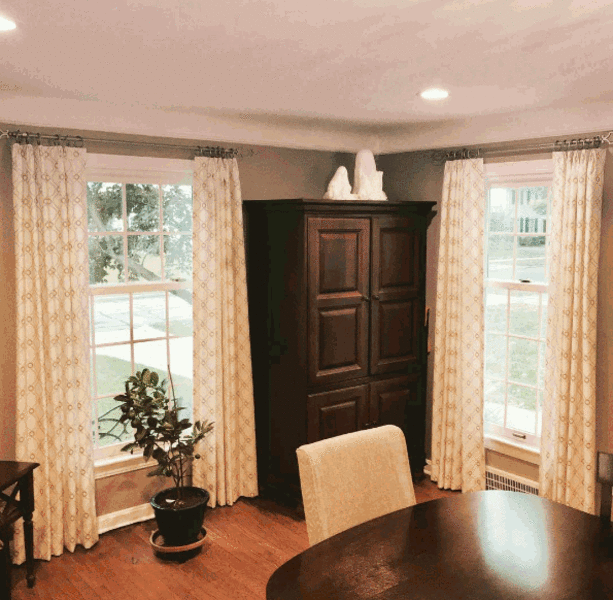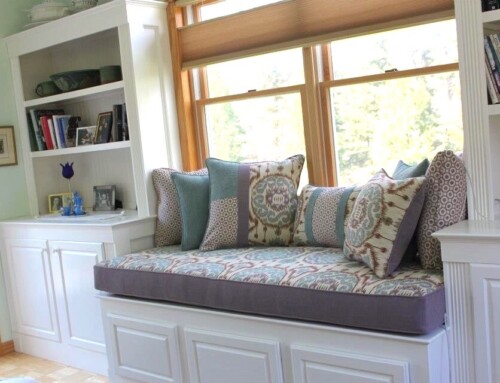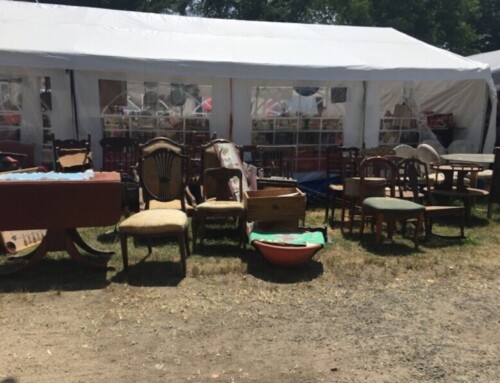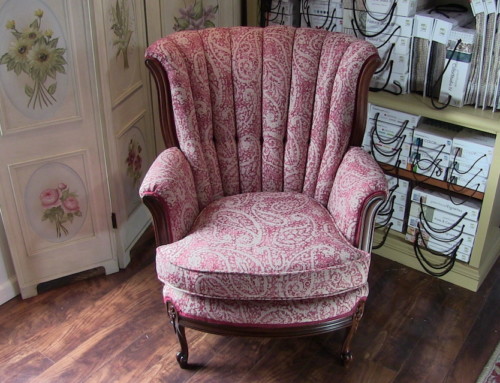This helpful post was provided by Greenhouse Fabrics. Greenhouse Fabrics has always been built by and for family. They’re always delighted to meet fellow lovers of beautiful fabrics.
The look of luxurious drapery that elegantly cascades to the floor is timeless. Professional looking drapery is a heavy issue; below are five techniques to add weight and fullness for amazing drapery.
Interlining/Bump cloth
The most fundamental way to add body and fullness to drapery is using an interlining, a fabric that hangs between the lining and face fabric. Greenhouse offers a variety of fabrics to use for interlinings, including; interlining, heavy flannel and bump cloth. These interlinings vary by weight with bump cloth being the heaviest and are available in natural or white. Using an interlining is essential when working with a silk or a light weight fabric unless it is sheer. Not only does interlining add body and fullness but it also serves as insulation as well as protection from sun damage.
Drapery Weights
We all know that drapery weights will help anchor drapes to the floor, allowing them to hang straight. These weights are generally placed at the bottom ends of the drapery; however, sometimes this is not enough. If the drapery is still slightly bowing at the bottom or along the side edges you may want to add more weights along the bottom tucking them into the hem of the face fabric. Make sure these additional weights will sit along the inside fold of the drape. On a rare occasion, I have also used spare change tucked and sewn into the hem and it worked beautifully.
Sausage Bead Weight
For sheer or lightweight drapery you may want to use “sausage bead weight” along the entire bottom of the hem. Sausage bead weight is a string of tiny, covered lead-free weights and is used to control flare and improve drape. In addition to adding weight to lightweight draperies, sausage bead weight makes an excellent decorative covered cording to use as a weighted edge for lightweight or bias-cut valances and swags.
Bottom Border
Another secret to control flare and provide a consistent appearance to drapery would be to add a custom border along the bottom of the drapery using a heavier fabric. Your clients will think you are simply adding a creative design element when actually there is a specific purpose for that border. I have seen borders anywhere from 4” and up along the bottom hem.
Thread Chains
If you are having a difficult time with the face fabric hanging smoothly within the folds, you may want to consider using a thread chain to attach the face fabric to the lining. The thread chains should be evenly spaced across the entire length of the bottom, about 5” up, between the lining and face fabric. They should be approximately ¾” long.

